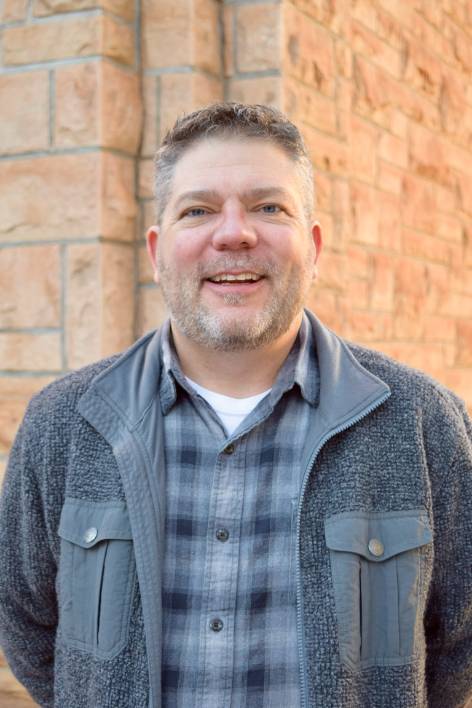Dr. Mark T. Clementz
Head of Department / Professor
Paleobiology

Teaching Statement
I have developed a teaching philosophy that emphasizes the importance of making lessons stimulating and informative in order to get the primary concepts across to students. I understand that a significant part of the scientific process is the ability to effectively
communicate ideas to the public, and I believe that teaching should be viewed as an extension of this process. Also, I appreciate that there is not a single teaching method that is universally appealing to all students; effective teaching requires an integrative approach, incorporating a variety of techniques including visual aids, hands-on exercises, and opportunities for class discussions.
Education
Geology, PhD, University of California, Santa Cruz, 2002
Geology, BS, University of Missouri, Columbia, 1996
Honors and Affiliations
Senior Research Fellow, Alexander von Humboldt Foundation
Research Scientist, Smithsonian National Museum of Natural History
Courses taught
GEOL2050 – Principles of Paleontology
GEOL4170 – Paleontology of Cenozoic Placental Mammals
GEOL4200 – Topics in Paleoecology
Graduate Student
Julian Diepenbrock (PhD)
Tyler Greenfield (MS)
Whitney Worrell (PhD)
Sarah Hurrell (MS)
Research Statement
My research interests integrate two fields of paleontological study. The first is the field of paleoecology, specifically the evolution of shallow marine/coastal ecosystems through time and the role that vertebrates have played within these ecosystems. The second is the field of paleobiology, emphasizing the study of physiological and morphological change within organisms, and relating the evolution of new traits to an organism’s ability to adapt to changing environments or to exploit new ecospace. My primary research method to gather ecological and physiological information is the stable isotope analysis (i.e., C, N, O, Ca, and Sr) of inorganic (biological apatite) and organic (i.e., collagen, lipids, hair) components of biogenic materials. These components can preserve original stable isotope values over millions of years and record a significant amount of information over an individual’s lifetime. In addition to this primary research tool, I am currently developing two additional research methods: microwear analysis of tooth enamel as a proxy for dietary preferences of extinct animals, and morphometric analysis as a means of quantifying morphological change through time. Together, these three methods form a tool kit that I can use to address a wide variety of paleontological questions.
Research Projects
All research projects are conducted in collaboration with colleagues at the University of Wyoming, the University of Arizona, Georgia Tech, Des Moines University, George Mason University, or the Smithsonian National Museum of Natural History.
Current Active Projects
- Excavation and Stable Isotope Analysis of Late Pleistocene and Holocene Fauna from Natural Trap Cave, Wyoming
- Paleoenvironmental Reconstruction of Late Miocene–Pliocene Marine Communities from the Bahía Inglesa Formation, Chile
Long-Term Research Interests
- Collaborative Research on Marine Mammal Evolution: Investigating feeding and dietary adaptations at the origin of cetaceans, sirenians, and pinnipeds, with emphasis on developmental and functional evolution
- Historical and modern variability in kelp forest trophic structure, reconstructed using biochemical markers of consumer diet
- Climatic and geographic controls on the biogeography and evolution of seagrass ecosystems throughout the Cenozoic
Selected Publications
Martinez, Priscilla R., Carrapa B, Clementz MT, Gutstein CS, Worrell WE, Hasiotis ST, Martinez-Lopez JG, and Munoz FA. 2025. Controls on late Miocene marine vertebrate bonebed genesis in northern Chile. Palaeogeography, Palaeoclimatology, Palaeoecology 659: 112622.
Carrapa B, Clementz MT, Feng R. 2019. Ecological and hydroclimate responses to strengthening of the Hadley circulation in South America during the Late Miocene Cooling. Proceedings of the National Academy of Sciences (PNAS). 116(20): 9747-9752.
Haas R, Stefanescu IC, Garcia-Putnam A, Aldenderier MS, Clementz MT, Murphy MS, Viviano CL, Watson JT. 2017. Humans permanently occupied the Andean highlands by at least 7 ka. Royal Society Open Science 4(6): 170331.
Clementz MT and Sewall JO. 2011. Latitudinal gradients in greenhouse seawater 18O: evidence from Eocene sirenian tooth enamel. Science 332: 455-458.
Clementz MT, Bajpa S, Thewissen JGM. 2011. Early Eocene Warming Events and the Timing of Mammal Dispersal from/into India. Geology 39(1): 15-18.
Thewissen, JGM, Cooper, LN, Clementz, M.T., Bajpai, S, and Tiwari, BN. 2007. Whales originated from aquatic artiodactyls: the Eocene Raoellids from India. Nature 450: 1190-1194

